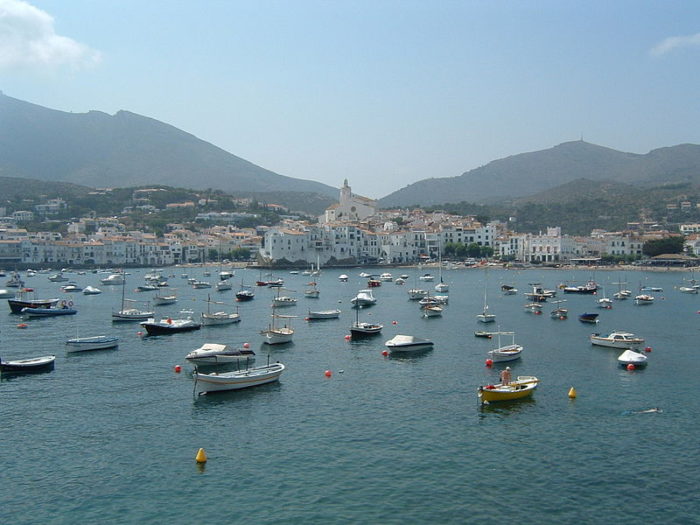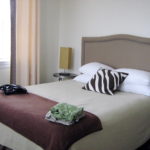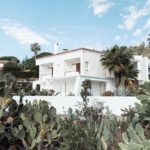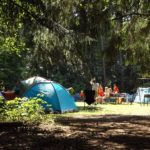With a long association with art and artists, Cadaqués is one of the Costa Brava’s most iconic seaside towns.

Cadaqués from the sea. Photo by Blacknight.
With its narrow streets and whitewashed houses Cadaqués is a world away from high rise resorts such as Lloret de Mar.
It has retained its charm despite being such a popular destination. And with much of the town pedestrianised it is easy to get around on foot and explore the winding streets.
Once a sleepy fishing village, Cadaqués was first documented in 1030 and through its history has been attacked by pirates and claimed by the French and it became popular with artists as far back as the late nineteenth century.
You can zoom in or click on the icons for more infoHowever, it was the late 19th and early 20th century that really put Cadaqués on the map. Like many Catalans, a large proportion of the population went to Cuba to make their fortunes, building elaborate houses with the money they had earned on their return, some of which can still be seen today. Since the 1960s the town has become a popular tourist destination, particularly a mecca for artists and has managed to retain its charm despite its popularity.
Artists flock to the town from around the world, attracted by the brilliant light and abundant nature. It should be no surprise that the great Catalan surrealist Salvador Dalí loved the area.
Cadaqués is at the most easterly point of the Iberian peninsula, on Cap de Creus, a rocky peninsula that forms part of the Pyrenean foothills. The stark contrast between the harshness of the rocks, the beaches and coves and the tramuntana wind make the area inhospitable in some respects. But the sheer beauty of the place more than makes up for those hardships. And today Cap de Creus is protected as a natural park, which means construction within the park itself is prohibited.
The wind, which can reach in excess of 100 kph and is bitterly cold in winter, has seen numerous nautical disasters. Wild seas have thrashed ships against the volcanic rocks.
Beaches
This area is known for its dramatic coastline, crystal-clear waters, and tranquil atmosphere. Here you’ll find numerous small coves along this unbelievably rugged stretch of the Costa Brava.
If your ideal holiday location has a beach of golden sand then Cadaqués probably isn’t for you. The beaches in and around Cadaqués are rocky and have pebbles rather than sand. For this reason you may want to wear plastic sandals in the water to protect against rocks and the many sea urchins you find attached to them.
However, the lack of sand isn’t a good reason to avoid the town. The water is clear, if a little cooler than further south, and there are many great locations for snorkelling and the whole area is beautiful.
If you doubt at how wild the Cap de Creus can be take a look at the video below showing wild boars on the beach:
The main beach in Cadaques has pebbles rather than sand and is perfect for swimming, sunbathing, and relaxing. There are umbrellas and sun loungers for visitors to rent, and there are also several restaurants and bars in the area. The beach is located close to the pedestrianised centre so it is easy to get to.
Platja de Sa Conca is a fairly narrow beach 15 minutes walk from the town centre. Parking is limited, so it is recommended to arrive early if you are driving. The beach is in a small bay with pebbles and is pretty basic but there are few buildings around and it is gloriously isolated.
Closer by is platja des Llané Gran and once again there is a small parking area located nearby, but it is often full during the summer months. This beach is slightly deeper and more built up but the whole area feels pretty wild. There are plenty of rock pools along this stretch of coast ideal for kids to explore. Nearby is a monument to the poet Federico García Lorca, a friend of Salvador Dalí, who was murdered in Granada at the start of the Spanish Civil War. Although the exact circumstances are unclear, is is thought probable that he was assassinated by a militia loyal to Franco.
On the other side of the village you’ll find a small rocky bay with a number of jetties for mooring small boats. At the extremes of the bay are platja ses Oliveres and platja del Ros with offshore moorings, two rather small rocky beaches. Continue a little further and you come to platja d’en Pere Fet, which is slightly larger and partly shaded by pines. With few buildings nearby it allows you to really disconnect and has a privileged view out to sea.
Platja de s’Aranella and platja Confitera is a tiny beaches looking out onto the island of S’Aranella with spectacular views. They are great to rest while exploring the area on foot but too busy in peak season to spend more than half an hour. And cala de Es Caials is rather too rocky to be comfortable but worth mentioning as it is sheltered from the northerly tramuntana when it blows, making it a good diving spot when the wind is blowing. Here you’ll find the wreck of the Llanishen lying in 12-25 metres of water. See What to See and Do for more on the Llanishen.
Cala de Portlligat is a small cove just northeast of Cadaqués. The cove has a small pebble beach which is sheltered by a small peninsula with a small island just offshore. Salvador Dalí bought a house overlooking the cove in 1930 where he usually lived and worked until 1982. The house is now a museum, and visitors can see many of the artist’s personal belongings, as well as works of art inspired by his life and work.
Before Portlligat you’ll find platja Boquelles and platja dels Calders and on the other side of Portlligat you’ll come across a tiny beach named after the surrealist. It’s a bit too small but a bit further on the slightly larger platja de Sant Antoni. The views from both a fantastic.
Where to stay
Like much of the Costa Brava, many visitors to Cadaqués stay in holiday homes. There are a number of hotels and hostals in the narrow whitewashed streets as well as an option for anyone wanting to camp. None of the hotels accepts pets and many only cater to adults.
If you’re visiting Cadaqués for the Dalí connection then Arrels Hotel Cadaqués is a good bet. It was a favourite haunt of the surrealist in the 1960s when it operated as a nightclub. A potential downside is that it only accepts guests of 18 years and older. For more basic accommodation Hostal Vehí is right next to the town’s iconic church. And Hotel Playa Sol is right next to the beach at Es Pianc with spectacular views over the bay. You’ll find more Cadaqués hotels here.
The town also has a single campsite, although it is currently closed and expects to be back in operation for the 2023 season.
Eating out and eating in
Being next to the sea there are plenty of restaurants serving fresh fish. La Sirena is very well regarded for seafood, while Can Tito does traditional Catalan fish and meat dishes in a cosy environment. Anyone looking to get away from the tourist trail a bit should look out for Restaurant La Cala, a favourite with many locals.
There are also a number of bars on the main beach where you may like to sit and watch the world go by, or stare out over the Mediterranean while nursing a cold drink and tapas.
Cadaqués doesn’t have any large supermarket so if you prefer to shop in bulk then head to Roses. There are a number of smaller supermarkets though which will probably suit your holiday needs and there are butchers, greengrocers and bakeries. And on Monday mornings there is an open air market in the car park located near the entrance to the town, close to the bus station.
What to see and do
Apart from swimming and sunning yourself on one of the beaches or in a rocky cove somewhere, the Cadaqués is renowned for its association with Salvador Dalí who had a house and workshop at nearby Portlligat. The Dalí House-Museum (as it is billed, see more information here) was the eccentric artist’s main residence and workshop from the 1930s until the death of his wife, Gala, in 1982 when he moved to Púbol Castle. Groups are restricted to just eight people at intervals of 10 minutes for the 45 minute tour and must be pre-reserved.
The area is also good for diving, with several dive centres offering dive courses and daily boat excursions in the summer months. The waters off Cap de Creus are often exceptionally clear and visibility even at depth can be excellent with plenty of marine life and rugged rock formations to explore.
The beach at Es Caials is also good for diving from the shore although you need to be careful of boat traffic.There you’ll find the wreck of the British merchant vessel The Llanishen, which was torpedoed by a German U-Boat during the first world war and abandoned by its crew.
Llanishen wreck
Just offshore in between 12 and 25 metres of water is a wreck, the Llanishen. In 1917, during the First World War, the cargo ship was torpedoed by a German submarine while travelling from Italy to the Spanish territory of Melilla, off the North African coast. The crew abandoned the ship aboard lifeboats and landed at Portbou and Port-Vendres in France, while the Llanishen ran aground in Es Caials.
The ship was afterwards dynamited and the main section lies in 12-17 metres of water, with another section somewhat deeper. There isn’t too much remaining, but it is a worthwhile dive and the same and the bay is sheltered from the tramuntana, which often stops dive boats from going out; most people simply get too sea sick.
You can also set off by car or on foot to explore the wonders of the natural park of Cap de Creus. There are numerous walks to secluded bays, although you’ll be lucky to find anything completely deserted; even if there are no other hikers you’ll find a number of boats there.
How to get to Cadaqués
The road to Cadaqués is pretty windy, but it’s much better than it was 20 years ago or so, when there were few crash barriers. If you are using public transport there are 4 buses per day to and from Figueres, which you can reach by train from Girona or Barcelona. The drive from Barcelona is around 2 hours 20 minutes or an hour and a quarter from Girona-Costa Brava airport.




